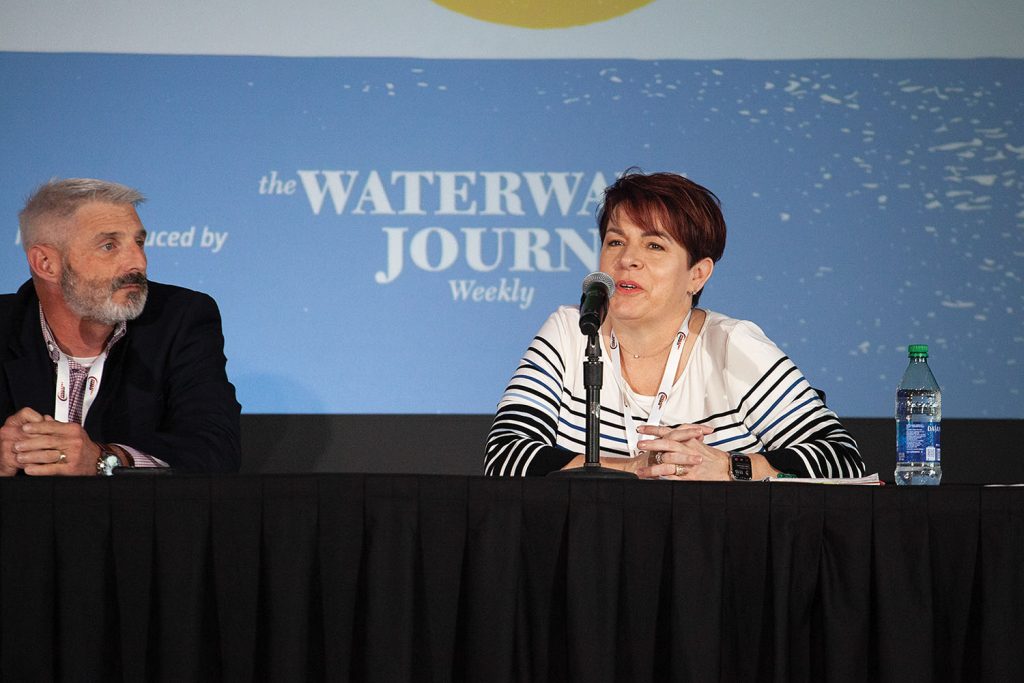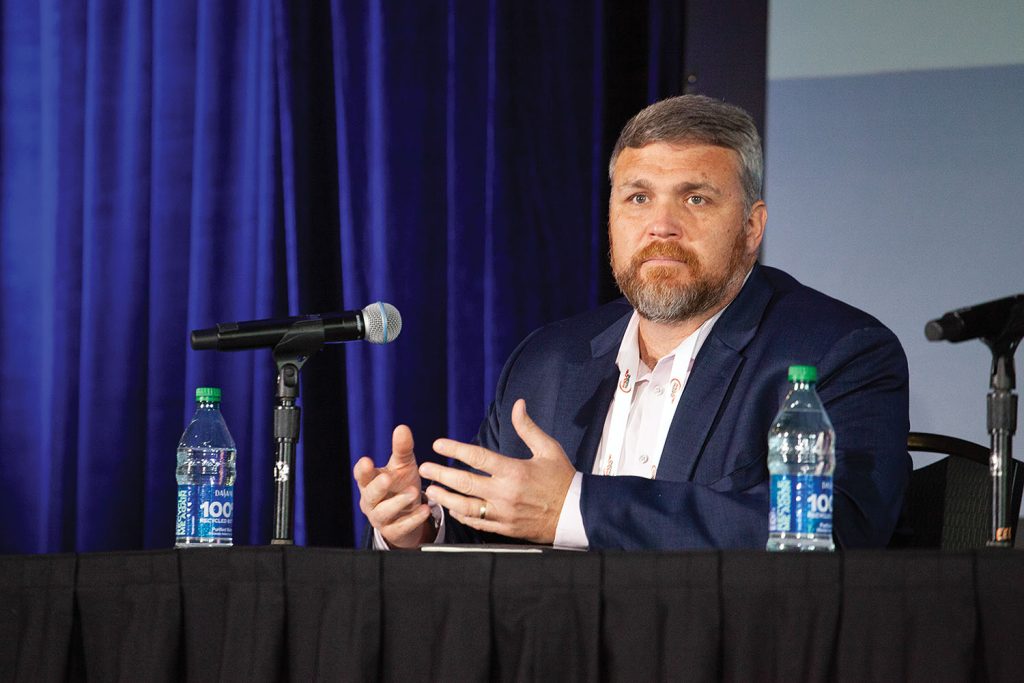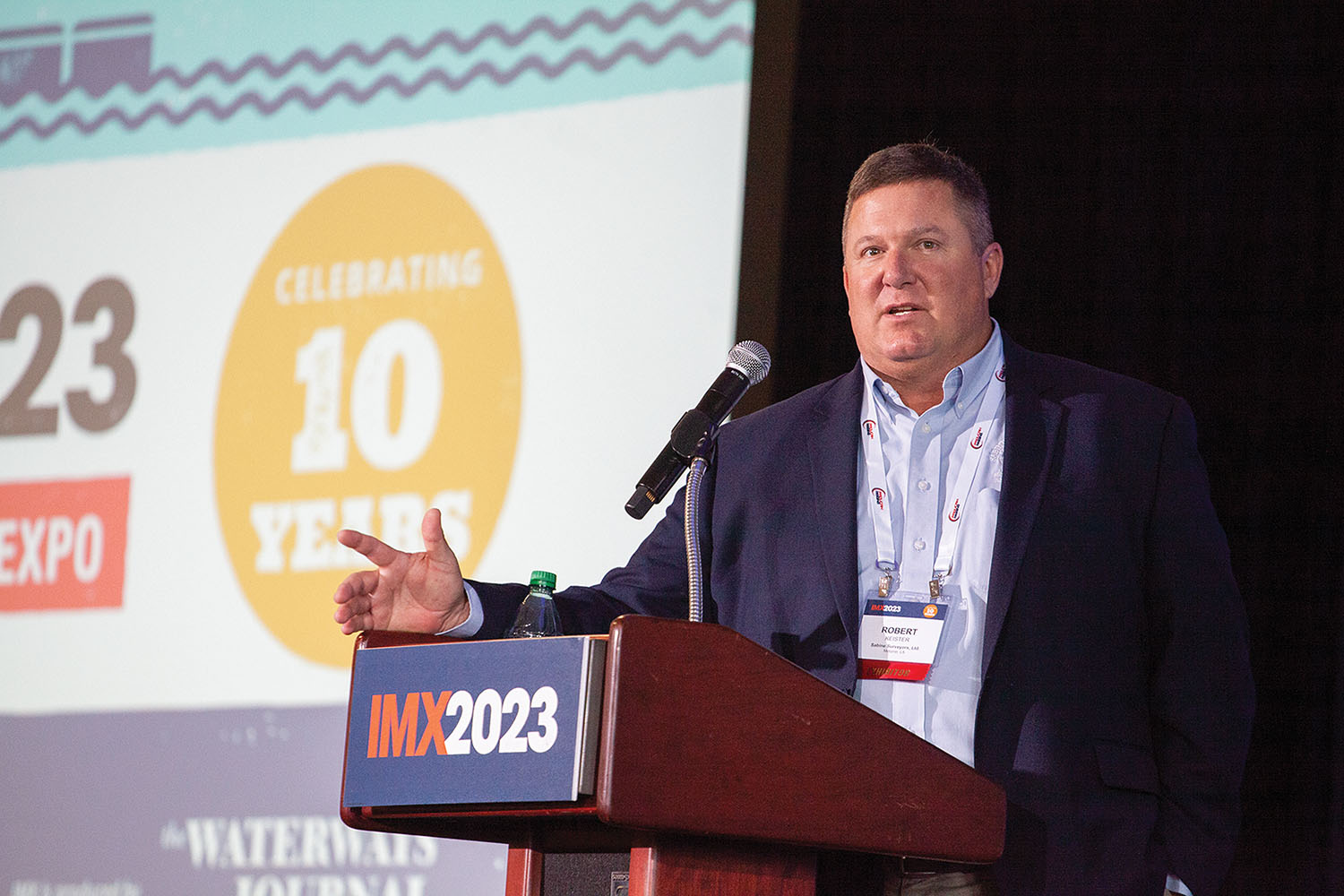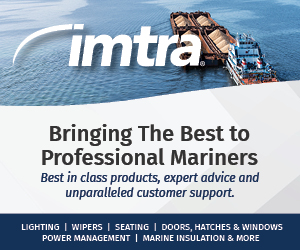With the Coast Guard’s Subchapter M requirements for certificates of inspection fully in effect, companies are now taking a closer look at required credit drydock inspections and internal structural exams.
To help get a better look at how far the industry has come toward meeting requirements so far and preparing for those in the future, the Inland Marine Expo, hosted by The Waterways Journal May 31-June 2 in Nashville, Tenn., included a panel discussion “Subchapter M: Lessons Learned and the Future.”
Panelists were Jamie Bigbie, vice president of operations, river division, at Southern Devall Towing; Mark Sawyer, marine operations compliance, Marathon Petroleum Corporation; and Tava Foret, president and co-founder, Towing Vessel Inspection Bureau. The session was moderated by Robert Keister, Cmdr., USCG (Ret.), vice president of Sabine Surveyors Ltd.
Bigbie began the session by noting that those in the industry have always had safety rules and regulations by which they had to abide, but that Subchapter M and the COI process formalized a system intended to bring about constant compliance and a move toward improvement for vessel and fleet safety. Ultimately, he said, that has led to a better long-term understanding of the state of repair of individual vessels and a company’s entire fleet and awareness of the possible impacts of delayed repairs.
Sawyer added that it has also led to better documentation of existing issues with vessels and how they have been addressed.
“We have to define what we do, how we do it and be able to replicate it to show to inspectors and regulatory bodies,” he said.
That in turn requires more collaboration, including working closely with shipyards to make sure all regulatory requirements are met when repairs are made.
Foret noted the change to 100 percent vessel audits, up from 10 percent of the fleet in the past, and sometimes with a great deal of flexibility as to which vessels were audited. Additionally, there was previously no prescriptive standard or scope of audits. These changes are big ones even for companies that had a safety management system in place already, she said.

She added that while previously a focus of internal audits might have been to fix “symptoms and not the cause,” that is no longer the case. Issues that arise multiple times during audits can now lead to questions about whether a company’s Towing Safety Mangement System (TSMS) is effective and being implemented well across all vessels, she said. Companies are taking closer looks at preventing problems and making sure they are limited to one vessel and not spreading to the whole fleet, Foret said.
Sawyer said one of the benefits of having regular external audits is the scrutiny they provide, however, including an opportunity to hear best practices that the company may not have previously been aware of.
Subchapter M has meant getting past the stigma of finding a nonconformity in an audit, Bigbie said. Instead, he said, rather than taking pride in a “clean” audit, crews need to view finding those nonconformities as evidence of a functioning safety management system.
Foret added those audits also provide an opportunity to review how effective their TSMS is.
“If you’ve written it in there, make sure you’re living with it,” she said. “If it’s not working, fix it. If it’s irrelevant, get it out. Deal with that, but do it in a way that really digs deep and looks at the bones of the system.”
Looking ahead to requirements for internal hull inspections and credit drydock inspections along with renewals of certificates of inspections, Sawyer noted it will be the first time the Coast Guard has been out on some of these vessels.
Timing the inspections will be key, he said, noting that companies will need to work closely with the Coast Guard to get as much flexibility in scheduling as they can.

Bigbie agreed, saying, “As an operator, our plan is to engage with the Coast Guard early and provide as much information as we can.”
Keister said achieving uniformity in inspections is likely to be an ongoing issue. So far, he said, inspections have ranged from four Coast Guard inspectors climbing all over a vessel to one person doing a 30-minute inspection for a COI.
Bigbie said it will also be important to make the most of a vessel’s time in drydock by doing a hull inspection first and getting together a thorough list of needed repairs as well as working with shipyards to make sure necessary supplies are in place.
“If you pull it out of the water and you don’t know what the hull looks like, now you’re under the gun to make some decisions,” he said. “Know what you’ve got before the drydock due date.”
Sawyer also stressed the importance of discussing more with the shipyard of what repairs will be made and to what standard and then carefully filing documentation of what was found, how repairs were made and how those repairs were tested for effectiveness to allow for easy retrieval of documentation during inspections.
Foret said the Coast Guard has made it clear not to expect much in the way of exceptions for meeting the upcoming requirements in order to operate a vessel.
“Plan, plan, plan,” she advised. “Don’t push it until the last minute.”
Caption for top photo: Robert Keister. (Photo by Frank McCormack)




